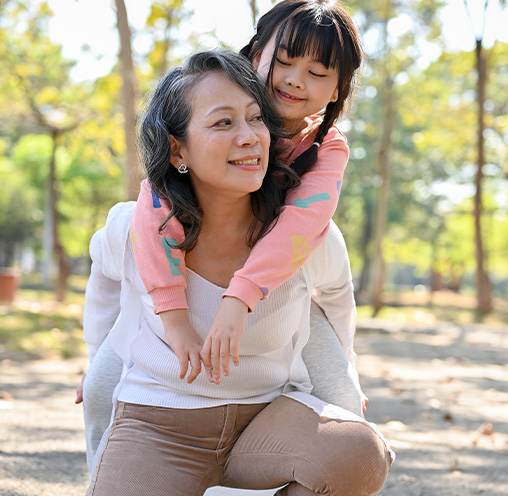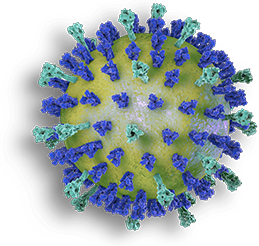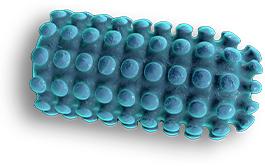Vaccines
We believe in the power of innovative vaccines to address unmet need, reduce the burden of disease, and help individuals live happier, healthier lives.

We believe in the power of innovative vaccines to address unmet need, reduce the burden of disease, and help individuals live happier, healthier lives.

RSV (respiratory syncytial virus) is a common, seasonal virus that can cause acute lower respiratory tract infection. There are an estimated 3.2 million hospital admissions and 60,000 in-hospital deaths annually among children under the age of 5 due to RSV infection globally. RSV infection can also be dangerous for older adults, with an estimated 3-7% of healthy older adults and 4-10% of high-risk older adults infected annually.

RSV is transmitted through droplets, surfaces, or direct contact. People with acute respiratory illness caused by RSV experience symptoms like runny nose, decrease in appetite, coughing, sneezing, fever, and wheezing. In children, RSV can lead to bronchiolitis or pneumonia and is associated with increased long-term risk for chronic conditions like asthma and recurrent wheezing. Among older adults, RSV infection increases risks for serious conditions like pneumonia and congestive heart failure.
For information about our RSV vaccine candidate, visit our Pipeline page.
References
Centers for Disease Control and Prevention. RSV (Respiratory Syncytial Virus) – Symptoms. https://www.cdc.gov/rsv/about/symptoms.html. Accessed November 17, 2022.
Falsey, A., Hennessey P., Formica, M., et al. (2005). Respiratory syncytial virus infection in elderly and high-risk adults. N Engl J Med, 352(17):1749–59.
Fauroux B., Simoes E., Checchia P., et al. (2017). The burden and long-term respiratory morbidity associated with respiratory syncytial virus infection in early childhood. Infect Dis Ther, 6(2): 173–97.
Shi, T., McAllister, D., O'Brien, K. et al. (2017). Global, regional, and national disease burden estimates of acute lower respiratory infections due to respiratory syncytial virus in young children in 2015: a systematic review and modelling study. The Lancet, 390: 946–58.
COVID-19 is a disease and global pandemic caused by infection with the SARS-CoV-2 virus. Since March 2020, when the World Health Organization declared COVID-19 a pandemic, COVID-19 has resulted in more than 750,000,000 infections and almost 7 million deaths globally as of June 2023. It has also resulted in untold economic and social disruption.

The SARS-CoV-2 virus is transmitted when someone infected with the virus breaths, coughs, speaks, or sings, spreading virus-filled respiratory droplets and aerosols that can infect others. Symptoms in mild cases of COVID-19 include fever, cough, tiredness and loss of taste or smell. In severe cases, patients may have difficulty breathing, feel chest pain, or experience loss of speech, mobility or confusion. The elderly and individuals with pre-existing conditions such as asthma, diabetes and cancer have increased risk for severe COVID-19.
For information about our COVID-19 vaccine candidates, visit our Pipeline page.
References
Fooks, A., Cliquet, F., Finke, S. et al. (2017). Rabies. Nature Reviews Disease Primers, 3: 17091.
Krammer, F., Smith, G., Fouchier, R., et al. (2018). Influenza Primer. Nature Reviews Disease Primers, 4:3. World Health Organization. (2022). Influenza (Seasonal). https://www.who.int/news-room/fact-sheets/detail/influenza-(seasonal). Accessed August 5, 2022.
Wei, X., Li, L., Zhang, F. (2021). The impact of the COVID-19 pandemic on socio-economic and sustainability. Environ Sci Pollut Res 28: 68251–68260.
World Health Organization. (2022). Coronavirus Disease (COVID-19) Overview. https://www.who.int/health-topics/coronavirus#tab=tab_1. Accessed November 17, 2022.
World Health Organization. (2022). Coronavirus Disease (COVID-19) Symptoms. https://www.who.int/health-topics/coronavirus#tab=tab_3. Accessed November 17, 2022.
World Health Organization. (2023). COVID-19 Dashboard. https://covid19.who.int/. Accessed June 2, 2023.
Rabies is a viral disease that causes inflammation of the brain in humans and other mammals. Current estimates of global burden in humans (about 60,000 deaths per year globally) are likely lower than the true value because of inadequate surveillance, cultural taboos, and symptomatic similarities between rabies and other severe conditions.

More than 99% of reported rabies cases in humans are transmitted from infected dogs. The virus first enters the peripheral nervous system. When it reaches the central nervous system, it can cause damage to cerebral function, leading to coma and death.
For information about our rabies vaccine candidate, visit our Pipeline page.
References
Fooks, A., Cliquet, F., Finke, S. et al. (2017). Rabies. Nature Reviews Disease Primers, 3: 17091.
